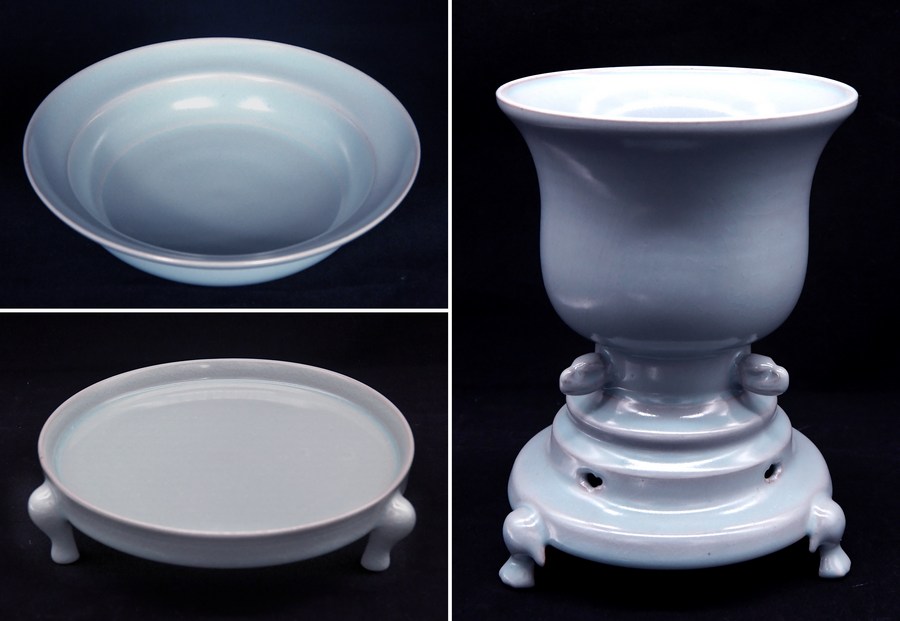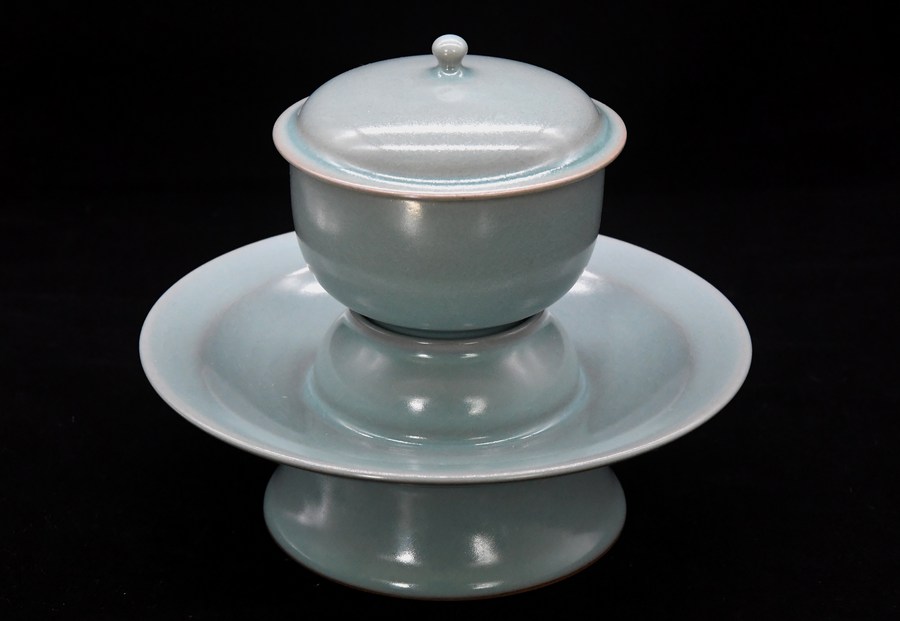RUZHOU, Dec. 30 (Xinhua) --China's Ru porcelain has a long history. It is well-known for its azure hue, light body, filmy grain, and gentle textile. At the end of the Northern Song Dynasty (960-1127), the Ru kiln was destroyed during the war era and the making technique was also lost. Only a few pieces of Ru porcelain ware have been preserved.
Artisans have worked hard over the past few decades to restore Ru porcelain's making technique. Wares with a pea-green glaze were successfully fired in 1964. In 1988, moon-white and azure glazes were also successfully restored. The Ru porcelain technique was listed as one of China's national intangible cultural heritages in 2011.
The Ru porcelain technique continues to evolve in today's Ruzhou City and Baofeng County of central China's Henan Province, and the Ru porcelain culture has become a vital component of the local cultural and creative industries.

Artist Wang Guoqi shows a piece of rat-shaped Ru porcelain he made in Baofeng County of Pingdingshan City, central China's Henan Province. (Xinhua/Li Jianan)

This combo photo taken on May 8, 2019 shows the Ru porcelain artworks made by Wang Junzi, the inheritor of Ru porcelain making. (Xinhua/Li An)

This photo taken on March 13, 2019 shows a Ru porcelain artwork displayed by a Ru porcelain company in Ruzhou, central China's Henan Province. (Xinhua/Li An)

This photo taken on May 8, 2019 shows part of a Ru porcelain work made by Wang Junzi in Qingliangsi Village, Baofeng County of central China's Henan Province. (Xinhua/Li An)

This photo taken on May 8, 2019 shows a Ru porcelain work made by Wang Junzi in Qingliangsi Village, Baofeng County of central China's Henan Province. (Xinhua/Li An)

Artist Wang Zhanwen checks tiger-shaped Ru porcelain works in Daying Township of Baofeng County, central China's Henan Province on Jan. 20, 2022. (Photo by He Wuchang/Xinhua)■













